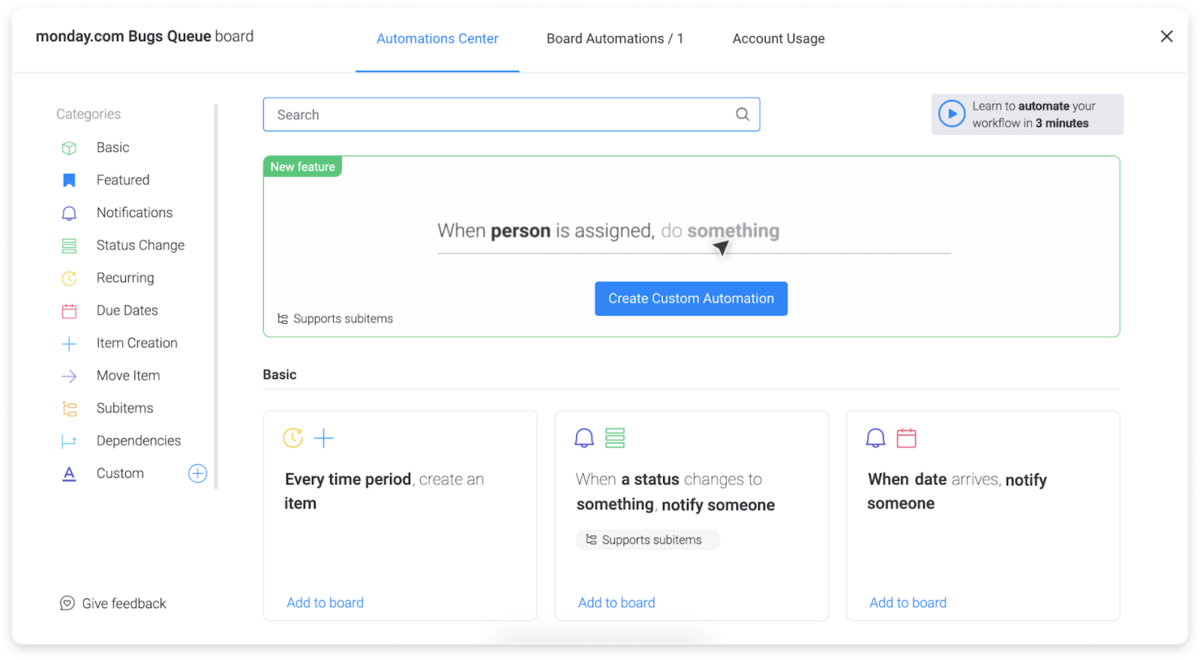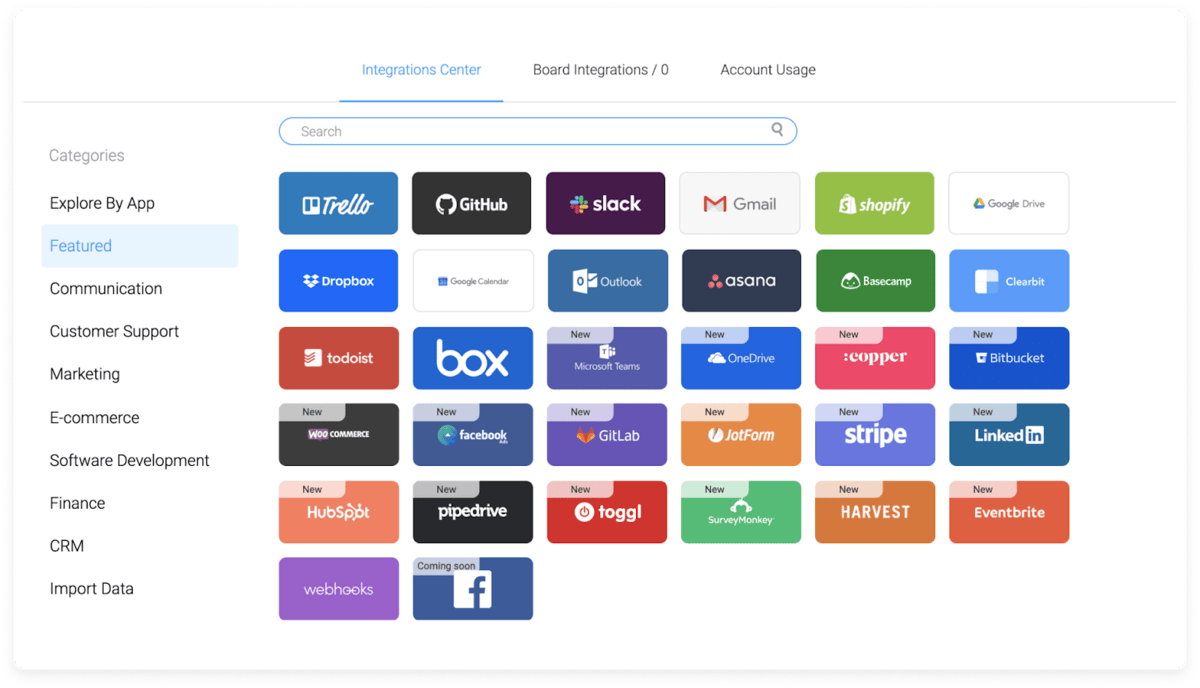What separates you from the competition?
Your name, logo, and brand colors help differentiate you. But why do your customers choose you over the competition?
In short, what’s your competitive advantage?
If that’s difficult to answer, or you find yourself losing market share year over year, then it might be time to go back to the drawing board and do some value chain analysis.
If that sounds complex, don’t worry, we’ll explain everything.
In this article, we’ll define value chain analysis, explain why it’s so important, help you identify ways to add value to your final product, and help you drive value chain growth with monday.com.
What is value chain analysis?
Understanding the concept of value chain analysis is relatively simple. Implementing it and reaping the benefits is a bit more difficult. Let’s start with some definitions:
Value chain analysis is a systematic approach to reviewing your company’s activities and finding ways to change your inputs so that your outputs have a higher customer value.
In plain terms, value chain analysis is stepping back to review every little action your company takes to deliver products and services to its customers and finding ways to improve them — so your customers see more value and are happier.
As you can tell, value chain analysis isn’t a surface-level activity. Understanding every square inch of your operations so that you can improve it requires strong attention to detail.
As we break down a complex topic, it’s best to understand all the components of value chain analysis.
Primary activities:
- Inbound logistics: supplier relationships, shipping/receiving, storing, and distribution.
- Operations: changing inputs into outputs.
- Outbound logistics: collection, storage, and distribution of products or services to the end consumer.
- Marketing & sales: processes that persuade customers to purchase from you.
- Service: post-sale activities that maintain the value of your product or service.
Support activities:
- Infrastructure: the support systems that keep the company functional.
- Human resources management: the company’s recruiting, hiring, training, and retention resources.
- Technological advancements: systems that maintain technical excellence and process information.
- Procurement: the activities surrounding purchasing of goods and services required to operate.
Clearly, value chain analysis is a large undertaking, but the rewards are well worth the investment.
Why is value chain analysis important?
Operating a successful business is a lot like going the wrong way on a moving sidewalk. If you walk, you’ll stay in the same place. If you stop, you’ll go backward. And if you really want to get ahead, you’ll need to hustle.
Value chain analysis is important because, without it, your business will stagnate.
Without progress, you’ll succumb to changing market conditions, competitor innovation, and technological advancement.
Value chain analysis makes it possible to not only maintain what you’ve built, but make it flourish. Performing regular detailed value chain analysis benefit your organization in many ways, such as:
- Finding cost reduction activities.
- Stoking value creation which creates more satisfied customers.
- Helping reveal opportunities for technology development or purchasing.
- Facilitating product differentiation which helps you stand apart from competitors.
- Carving out a competitive strategy that the entire company can rally around when making key decisions.
By now, you’re probably itching to get into the how so let’s shift gears a bit.
How to find real value using Porter’s Value Chain model
Ultimately, value is the heart of any thriving organization. The amount of value you create minus your costs of creating said value equals your profit margin. Naturally, the lower your costs and the greater the value, the higher your profits will be.
Michael Porter is a leading authority on competitive strategy and wrote about value chain analysis in his book Competitive Advantage.
In it, he introduces the idea of a general-purpose value chain that every company can leverage to examine all their activities and visualize how they’re interconnected.
With Porter’s Value Chain model, you can ask and answer the question:
“Where can we increase value or reduce costs?”
Porter’s Value Chain primarily focuses on the activities we discussed above — primary and support.

The visual above neatly separates the 2 buckets of activities that contribute to your overall profitability.
The primary activities related to the creation, sale, support, and maintenance of a product or service (as seen across the bottom of the chart above).
Support activities feed into either one or several of the primary activities.
The model goes deeper by breaking support and primary activities into 3 types of sub-activities:
- Direct sub-activities create value on their own.
- Indirect sub-activities aid other activities run more efficiently.
- Quality assurance sub-activities help other activities maintain the required standard.
Ultimately, value chain analysis helps identify and execute links between sub-activities that result in one of 2 strategies:
Cost advantage strategies:
- Improving order turnaround times means you’ll spend less effort, time, and money fielding calls from frustrated customers.
- Mastering inventory management that follows more of a just-in-time (JIT) inventory system where you receive goods as close as possible to when they are actually needed and ultimately lower your storage costs.
Differentiation advantage strategies:
- Providing a premier customer service team that actually picks up the phone when you call would cost more but likely bring in more customers that value service and support.
- Investing heavily in research and development so your company’s technology offering is greater than your competitors — which will bring in more customers who value innovation.
Porter’s Value Chain helps identify the activities that add value, reduce costs, and provide differentiation. But how can you take advantage of such opportunities right away?
How to drive value chain growth with monday.com
Dissecting your company’s value chain to gain a competitive advantage boils down to understanding your company’s overall strategy and deploying the right software solution.Here’s how monday.com can help:
Make collaboration feel easy
Making any changes to your value chain framework comes down to communication and collaboration. Your team needs a way to pool their collective knowledge so they can find ways to boost differentiation or create a cost advantage.
More importantly, they need a way to communicate that isn’t cumbersome. One that filters through the noise and keeps things feeling relevant and productive.

monday.com answers the call by providing real-time message updates on tasks by simply tagging colleagues or the entire team. Getting a status update, offering feedback, or asking questions takes seconds and will dramatically reduce the need for emails and meetings.
Customize your workflow to your unique needs
The value chain activities required to produce a final product involve hundreds if not thousands of tiny actions from beginning to end. The odds of finding some off-the-shelf software that lines up with how you do business are slim to none.
The key to optimizing your workflows with business process modeling or creating custom workflows once again is monday.com. Support process optimization comes into play at the tail end of analyzing your value chain, and that’s monday.com’s bread and butter.
For example, plenty of companies use monday.com to maximize the efficiency of their customer success teams by organizing shift schedules, optimizing resource management, tracking tickets via Zendesk, and gathering customer satisfaction scores.
That’s just one of the dozens if not hundreds of use cases monday.com supports that have the potential to transform the way your company operates.
Embrace automation
There’s a good chance you’re asking for a lot from your employees.
We’ve done our own research on the matter and found that 40% of employees work past their scheduled work hours several days a week. 57% of them feel burnt out. Most importantly, 54% believe they could save at least 5 hours a week if they had tools to automate their tasks.
That last line is crucial to the supply chain analysis.
You know, supporting activities and secondary activities require a lot of human resources. It’s also possible that quite a bit of that doesn’t have to actually be done by humans.

monday.com offers unlimited custom automations that can maximize efficiency and reduce costs.
Some notable examples are creating recurring tasks, moving items within boards, notifying relevant people based on board actions, and providing due date reminders.
The sky is truly the limit with automations.
Enhance your reporting capabilities
What gets measured gets managed, and if you’re not measuring both the direct activities and indirect activities of your firm’s value chain, then you’re leaving a lot to chance.
Think about it. If nobody sets key performance indicators (KPIs) and actively communicates their importance to the employees who can affect them, then nobody has any idea if they’re improving, backsliding, or staying consistent.
Here’s where monday.com’s reports and dashboards shine.
Board-level reporting provides granular insights to every detail throughout the organization, and you get the ability to filter by just about any criteria you can dream up.
The best part is these boards fuse together on monday.com dashboards to provide real-time insights you’d have difficulty replicating anywhere else.
You get popular reporting widgets for numbers, time tracking, tables, calendar, and various other useful data visualizations. All of them help track the sub-activities your company leverages to create value and ultimately make it easier to spot opportunities for improvement.
Tap into the power of integrations
One software can’t do it all. You know it, and we know it. That’s why we’ve opened up to create countless integrations to other popular software solutions, so your team stays connected to all the tools in your arsenal.

When it comes to optimizing your processes to reap the rewards of value chain analysis, you need tools that will play nicely with each other.
Integrations make it possible to get real-time insights across all your systems. This boosts operational efficiency and makes it easier to make informed decisions that don’t rely on manual entry, which is prone to human error.
Having a centralized resource like monday.com that connects all your software also means you’re saving computer storage space and saving money too.
monday.com offers dozens of integrations, including CRM, marketing, software development, and project management. You also get access to Zapier’s monday.com integration which skyrockets your possibilities to 3,000+ apps.
Getting even more value with the flexibility of monday.com
Maximizing the potential of your company’s value chain requires serious leg work. It means understanding every single activity it takes to deliver a product or service of value to your customers.
To streamline that process, you need software that’s customized to how you do business. That software is monday.com.
Here are just a handful of other ways monday.com as a Work OS provides value to both your company and ultimately your customers:
- Comprehensive file storage that provides real-time access to all employees all the time.
- 200+ template library that kickstarts your process improvement initiatives.
- Fully functional mobile apps that keep your team interconnected no matter where they are in the world.
- 24/7 support, so each business activity always has the support they need to get the job done right.
Transforming your global value chain and maximizing your profit margins is easier than it looks — especially, if you’re using the right software.
Creating value consistently
The entire process starts by leveraging brainstorming techniques that will reduce costs or provide a competitive advantage.
Then by leveraging Porter’s Value chain analysis, you can uncover each primary activity and support activity that provides an opportunity to maximize profits.
Knowing how your company creates value and actively seeking out ways to create even more value are both critical to developing a strong competitive advantage.
Pairing the value chain analysis process with the powerful Work OS that is monday.com almost feels unfair.
It’s a combination that will revolutionize the way you do business forever.
If you’re ready to create some of that magic yourself, then check out our Production Management template.


